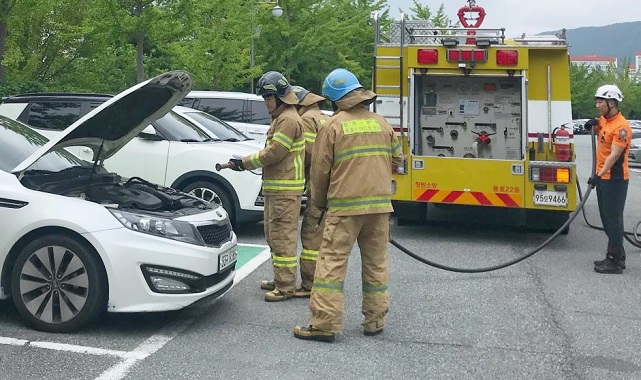
EVs consist of battery packs, fuel cell systems, motors, and other parts that involve high voltage that could easily electrocute a person.(image: Changwon Fire Service Headquarters)
SEOUL, Aug. 21 (Korea Bizwire) — With the increasing popularity of electric vehicles (EVs), South Koreans are becoming more concerned with the risk of fire.
EV batteries, similarly to energy storage system (ESS) that shocked the country last year due to a series of fire accidents, are lithium-ion batteries.
When a non-EV with an internal combustion engine goes up in flames, water is normally used to extinguish the fire. When the fire is too strong, foam is sprayed to cut off the supply of oxygen and contain the fire.
However, EVs consist of battery packs, fuel cell systems, motors, and other parts that involve high voltage that could easily electrocute a person.
For these reasons, a fire extinguisher that replaces water with liquid carbon dioxide is used to put out fires caused by EVs.
Firefighters, when dealing with car fires, first have to determine whether the car is an EV or has a more conventional engine.
Then, they use multimeters to check if the car has experienced any electricity leaks, and cut the battery’s main power before extinguishing the fire.
The firefighters have to put on rubber gloves, boots, goggles, and other safety equipment to fight an EV fire.
When battery packs catch on fire, liquid electrolytes that spill out of the battery can cause sparks or release various toxic gases, requiring caution.
Kevin Lee (kevinlee@koreabizwire.com)






